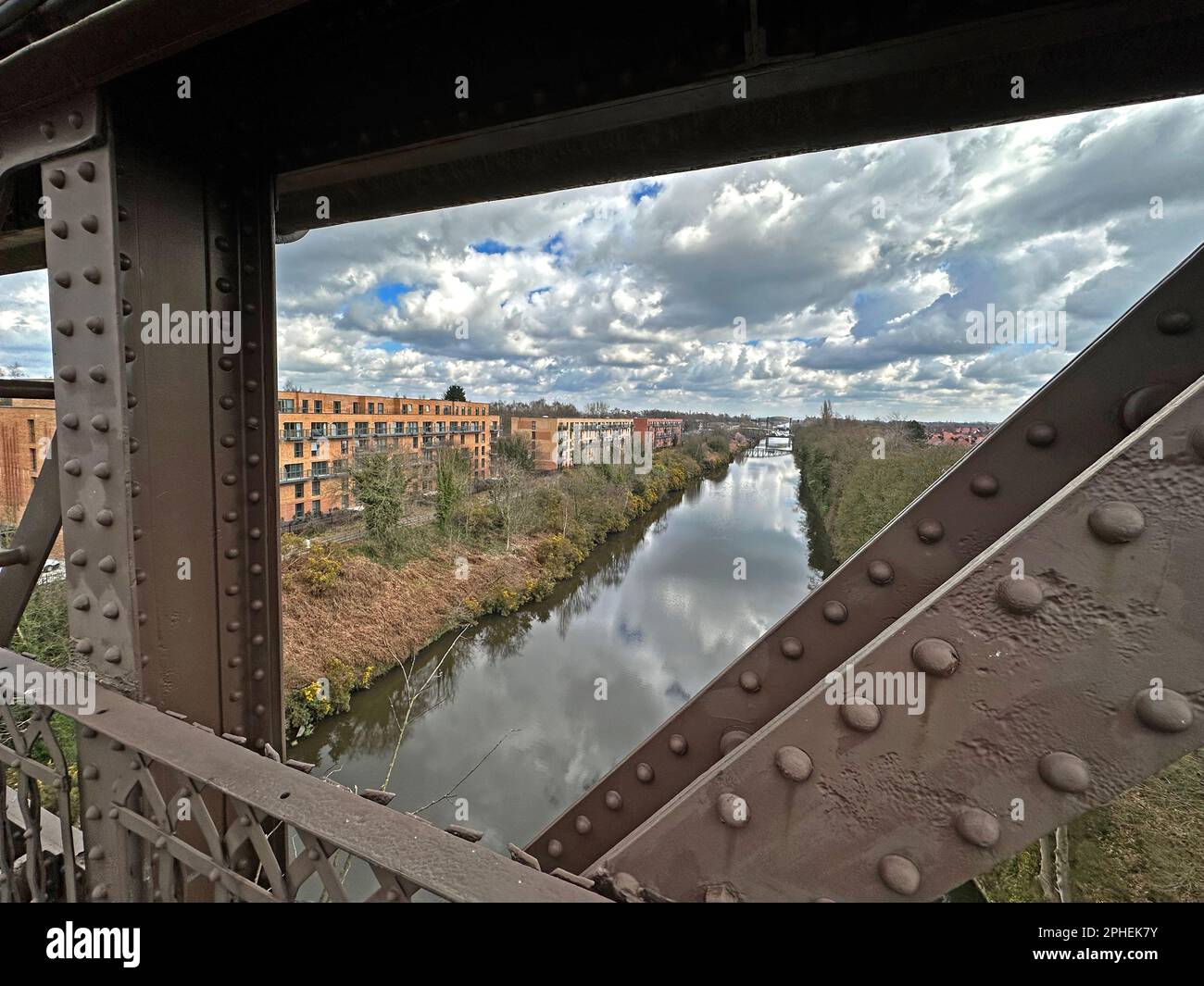Suicide danger spot, the Cantilever bridge at Latchford on the MSC, Manchester Ship Canal, Warrington, Cheshire, England, UK, WA4 2BU

Image details
Contributor:
Tony Smith / Alamy Stock PhotoImage ID:
2PHEK7YFile size:
35.1 MB (1.4 MB Compressed download)Releases:
Model - no | Property - noDo I need a release?Dimensions:
4045 x 3034 px | 34.2 x 25.7 cm | 13.5 x 10.1 inches | 300dpiDate taken:
27 March 2023Location:
Cantilever bridge, Latchford, Manchester Ship Canal, Warrington, Cheshire, England, UK, WA4 2BUMore information:
The eight Warrington ship canal bridges can be seen keeping a silent watch over the town, with the complete straightness of the waterway enabling the onlooker to see every bridge from the Thelwall Viaduct to Moore Lane Swing Bridge. And it is these bridges that make this canal both unique and ground breaking. The Cantilever itself weighs about 783 tonnes and the 206ft span carries the roadway 75 feet above the water level. It was designed to provide a constant route to Latchford Train Station free from the interference and traffic stoppages associated with the turning of the nearby swing bridges. The 36-mile canal opened on May 21, 1894, in a bid to divert trade from Liverpool docks into the centre of Manchester. Dubbed The Big Ditch', more than 54million cubic yards of material were excavated for the canal, including 12million cubic yards of sandstone rock. Terraced houses were set up nearby for workers, the likes of which can be seen on the estates off Knutsford Road in Latchford. Meanwhile, bigwigs of the Manchester Ship Canal Company set up home in grand villas, most of which still exist in lower Grappenhall and Stockton Heath. Work was twice delayed by water flooding into sections of the excavation, in November 1890 and December 1891. However, the canal was finally completely filled with water in November 1893. It opened to its first traffic on January 1, 1894. Today it is still a seaway for 1, 500 ships annually carrying 6.5million tonnes of cargo.